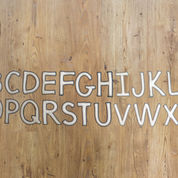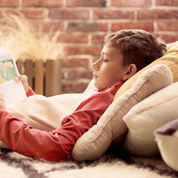
Young Learner Program

Purpose
To introduce young children to tools for enhancing attention, focus, and self-regulation while learning the alphabet and acquiring foundational pre-reading and reading skills. This program equips parents or family members with the knowledge and experience needed to continue supporting their child's learning during their early school years. It offers a simple, enjoyable alternative to traditional pencil-and-paper activities and rote exercises.
Age
Designed for children aged five to seven, as well as older children with significant developmental delays. Note: Children already showing dyslexia symptoms or reading anxiety at this age may require additional steps and program time beyond the standard program.
Length of Program
Approximately 30 hours, typically delivered over ten half-days, with up to 6 hours of follow-up consultation included. A parent is present for half of the program.
Outcome
Following their time with a facilitator, both the child and parent will be proficient in using techniques to control attention, focus, and energy levels. In addition to gaining skills for beginning reading, they will understand methods for mastering words and language symbols. The child will also have learned the alphabet and basic punctuation marks.

Develops
Focusing Skills
Techniques and tools designed to cultivate a mental state that is alert, aware, and primed for learning.
Self Management Skills
Abilities that include maintaining sustained attention, focusing, following directions, effective communication, and alleviating stress and anxiety
Symbol Mastery
Achieving proficiency in the alphabet, punctuation marks, and basic sight words through clay modeling, which engages visual, kinesthetic, and auditory learning. This includes mastering the spelling, pronunciation, and meaning of the most common words encountered in reading for grades K-3.
Reading Exercises
Enhancing word recognition and comprehension by using straightforward, step-by-step methods that provide a supportive approach to teaching word recognition and comprehension. This method can stand alone or supplement a phonics program..
Kinesthetic Balance & Catch Exercises
Activities that strengthen neural pathways related to learning and focus, significantly benefiting children struggling with fine-motor or gross-motor skills, such as handwriting, sports, or coordination
Reduces
-
Inconsistency in reading proficiency (understanding one day but not the next)
-
Guessing at words
-
Rushing and careless reading mistakes
-
Fatigue, anxiety, headaches, dizziness, stomach aches or tears due to reading challenges
-
Perception that printed words seem to move on the page
-
Difficulty with comprehension
-
Slow and laborious phonetic decoding of words
-
Reversals
-
Challenges with eye tracking


Young Learner Program Tools
The Programs provided at Rocky Point Academy get to the root of learning challenges. Each client leaves with a “tool box” The following are a list of tools that may be provided.
Click any the pictures below to see a larger version of the tools' descriptions.














